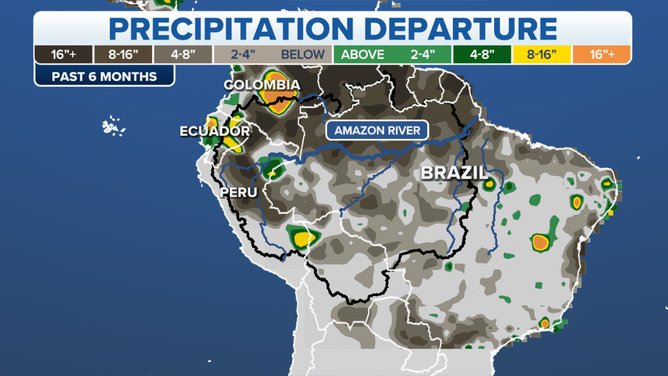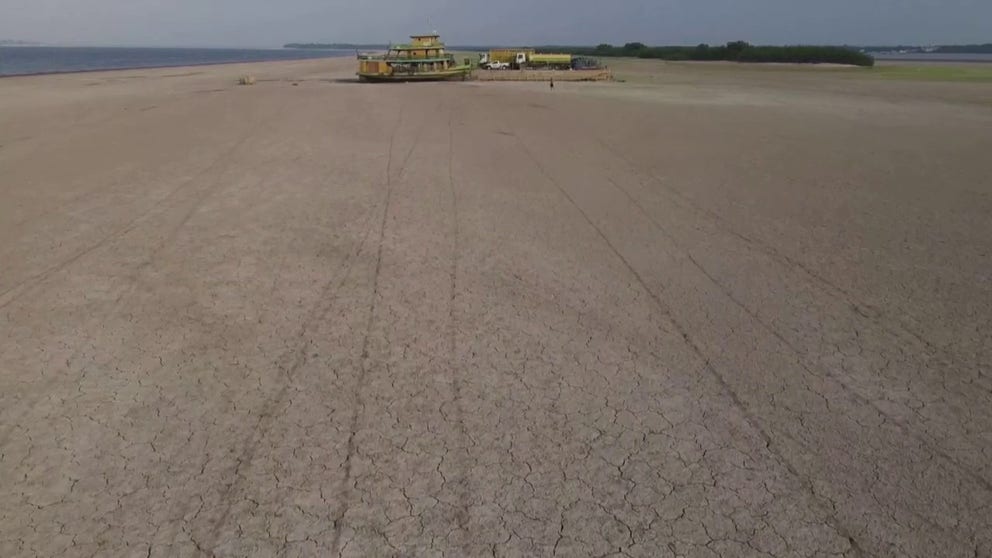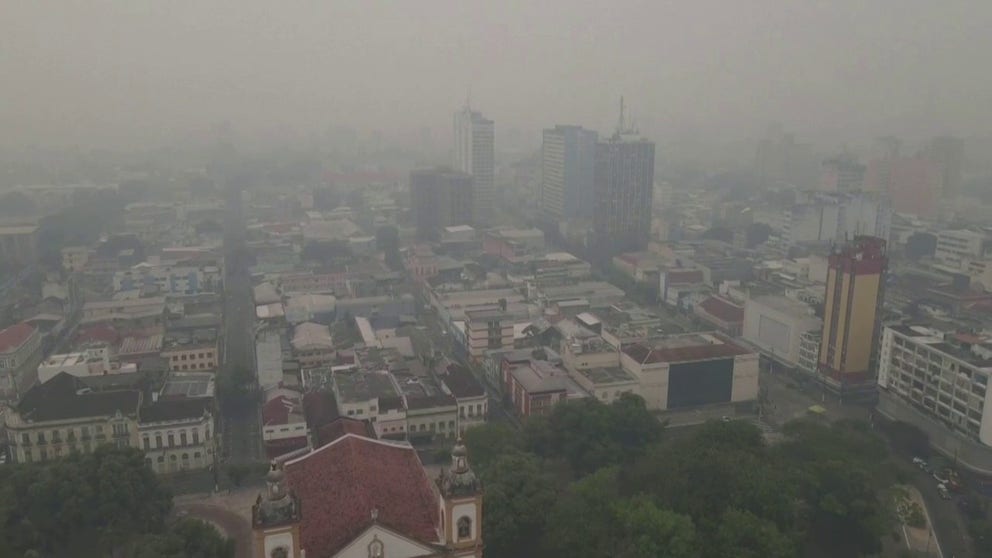Drone video shows stranded ships on Amazon River as port reaches 121-year low levels
The Amazon River reached the lowest levels in over 120 years at the port of Manaus, the region's capital city, with a recording of 13.59 meters. Lack of rainfall and extreme temperatures are cutting off cargo ships from delivering supplies to remote villages.
Drone video shows boats stranded on Amazon River amid drought
Drone video shows the extreme drought conditions on the Amazon River causing ships and cargo to become stranded.
Cargo ships are unable to pass at a major river port in Brazil's Amazon rainforest as drought has dropped water levels to a 121-year low, stranding ships and cutting off supplies to remote villages in the state of Amazonas.
Drone video shows vessels near the region's capital city Manaus, stuck in the dried-up riverbed and trucks driving onto the riverbed to retrieve some items from boats. Researchers believe the drought also contributed to the death of 120 rare Amazon River dolphins.
On Monday, the river reached the lowest levels in over 120 years at the port of Manaus with a recording of 13.59 meters, according to the port’s website.
That’s the lowest measurement since 1902, when water level records began and just surpasses the previous all-time record low set in 2010 at 13.63 meters.

A ship stranded in drought conditions on the Amazon as seen from a screenshot taken from aerial video. (Image: Reuters)
(Reuters)
For drought conditions to improve, significant rainfall is needed throughout the Amazon River Basin.
STRONG EL NINO WINTER: WHAT KIND OF WEATHER YOU CAN EXPECT
The Amazon River, rainforest and seasonal floodplains can rise and fall up to 39 feet yearly with tropical rains. Manaus only saw one day of rain in all of August, according to the Climatempo Institute. Over the past 6 months, areas of the Amazon River Basin have below-average rainfall totals by up to 16 inches.

Some areas of the Amazon River are well below average rainfall totals.
(FOX Weather)
The low water levels are preventing cargo ships from passing through the river and cutting off village communities to critical water, food and fuel supplies normally delivered via river transport.
According to Reuters, the drought has affected 481,000 people in the state of Amazonas. Last week, the Brazilian NGO Fundacao Amazonia Sustentavel delivered supplies to communities cut off by the drought, Reuters reports.
The ongoing El Niño climate pattern continues to influence global extreme heat and rainfall patterns, which are expected to continue through winter, according to NOAA's Climate Prediction Center.
The drought, along with record-high temperatures, is contributing to record Amazon rainforest fires this year. The Amazon continues to burn at a historic rate, sending smoke pouring into communities across Brazil.
The video below shows the recent smoky conditions created in Manaus from fires.
During the first half of 2023, 3.6 million acres have burned in the Amazon rainforest, according to The Rainforest Foundation.
Smoke in Brazil from Amazon wildfires
Aerial video shows smoke enveloping Brazil as fires continue to burn in the Amazon Rainforest. During the first half of 2023, 3.6 million acres have burned in the Amazon, according to The Rainforest Foundation.




